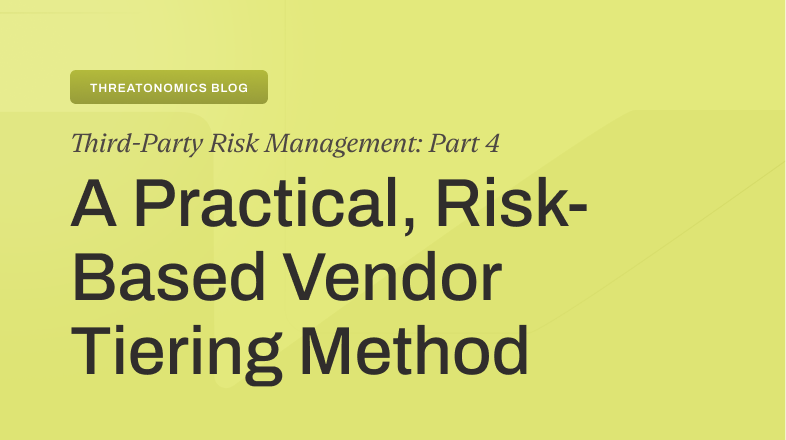Cybersecurity breaches stand as a relentless challenge for organizations worldwide, causing substantial financial repercussions. As cyber threats advance in complexity, the economic impact on businesses intensifies, affecting everything from upfront costs to sustained financial health.
A thorough investigation into the financial risks posed by cybersecurity breaches reveals the breadth of direct and indirect expenses that can undermine an organization’s financial foundation. Looking into these costs offers a clear perspective on managing the economic fallout of cyber incidents, providing valuable insights for safeguarding against future cybersecurity threats.
Cybersecurity Breaches: A Financial Perspective
Recent statistics paint a grim picture: the average cost of a data breach has been steadily climbing, reaching millions of dollars. Such breaches disrupt operations and erode trust among consumers and partners. Calculating and preparing for the financial consequences of an incident is crucial for organizations to safeguard themselves adequately.
Examples of Financial Consequences
Several high-profile cybersecurity breaches serve as stark reminders of the potential financial fallout. A recent report by IBM revealed that in 2023, the global average cost of a data breach reached $4.45 million, marking an all-time high with a 15% increase over the last three years.
This surge underscores the significant financial risk cybersecurity breaches pose, with detection and escalation costs jumping by 42%, indicating more complex breach investigations are becoming the norm. These examples underscore the critical need for robust cybersecurity measures and effective risk management strategies.
The Direct Financial Impacts of Cybersecurity Breaches
When a cybersecurity breach occurs, the immediate financial consequences can be staggering. These direct costs include but are not limited to:
Immediate Costs: The initial outlay for detecting and responding to a breach can be substantial. This includes the cost of forensic investigations to determine the breach’s cause, as well as expenses related to remediation efforts to close security gaps. A privacy law firm will also assign an incident coach to triage the incident and help the insured navigate the complexities of the incident.
Legal Fees and Fines: Organizations often face legal challenges following a breach. Legal fees for defending against lawsuits, settlements, and fines imposed by regulatory bodies can further inflate the costs.
Notification Costs: Firms across various regions must adhere to legal obligations, issuing notifications to individuals whose personal data has been disclosed during breaches. While regulatory responses to breaches are a legal requirement, managing incidents—even when not legally mandated to notify—still incurs significant costs.
The Indirect Financial Impacts: Long-Term Repercussions
Beyond the immediate fallout, cybersecurity breaches can have profound indirect financial impacts that resonate long after the incident. These include:
Reputational Damage: The loss of consumer trust can be one of the most challenging consequences to quantify. A tarnished reputation often leads to lost sales, reduced customer base, and a drop in stock value.
Strategic Costs: Breaches can force companies to alter their strategic direction. Investments in new security technologies, business model changes, and market positioning shifts all carry significant costs.
Operational Disruptions: The aftermath of a breach can disrupt business operations, leading to lost productivity and revenue. Recovery, spanning from immediate business interruption to extortion demands and data restoration, can extend over a long period, amplifying the financial burden.
Strategies for Managing Financial Risk
To mitigate the financial impact of cybersecurity breaches, organizations can employ a variety of strategies:
Prevention: Investing in advanced security technologies and employee training can reduce the likelihood of a breach. Regular security assessments and updates to security protocols are essential.
Response Planning: A comprehensive incident response plan, in harmony with business continuity, disaster recovery plans, and crisis communication strategies, is crucial for swift recovery. This plan must not only align with these frameworks but also undergo rigorous testing to ensure efficiency, thereby reducing the duration and adverse effects of a breach.
Financial Safeguards: Cyber insurance can provide a financial buffer against the costs associated with breaches. It’s crucial to understand the terms and coverage limits of these policies.
Compliance and Best Practices: Adhering to industry standards and regulatory requirements can not only prevent breaches but also mitigate legal and financial penalties.
The Role of Financial Risk Management in Cybersecurity
As cyber threats evolve, so too must strategies for managing financial risk. Organizations must stay informed of emerging threats and adapt their risk management practices accordingly. This involves not only investing in technology but also in the people and processes that support a culture of security awareness and resilience.
Managing financial risk requires a dynamic and multifaceted strategy. Organizations must prioritize investing in their workforce development and operational process refinement beyond the foundational technology investment. This will foster an environment where cybersecurity is managed as a business risk. This means not only providing regular training and awareness programs for all employees but also ensuring that security practices are seamlessly integrated into daily workflows.
By adopting a proactive stance on cybersecurity, businesses can enhance their ability to detect, respond, and recover from threats swiftly, reducing the potential financial impact of breaches.
Conducting regular audits and threat simulations can help organizations identify vulnerabilities before they are exploited and develop more robust defenses against future attacks. This approach underscores the importance of making continuous improvements to your cyber risk management strategies and understanding that effective defense against cyber threats extends well beyond the technology itself to encompass the entire organizational culture.
A Proactive Approach to Financial Risk Management
The financial risks associated with cybersecurity breaches are a reality that organizations can no longer afford to ignore. Companies must recognize that while not all financial losses from cyber incidents can be completely prevented, proactive preparation is key to minimizing their impact.
Our philosophy centers on resilience: anticipating feasible losses that could critically affect an organization’s value delivery and crafting strategies to lessen the likelihood of such impactful incidents. Embracing this approach does not generate fear, uncertainty, or doubt, but fosters a calculated response.
By deeply understanding cyber risk quantification, businesses can fine-tune their preparedness for inevitable challenges, ensuring a robust defense against disruptions while maintaining their commitment to delivering value. Cyber incidents are a reality to be managed thoughtfully, with the overarching goal of Cyber Resilience guiding organizations towards sustaining their operations in the face of adversity.
A proactive approach to cybersecurity, encompassing prevention, preparedness, and protection, is essential to safeguarding an organization’s financial health and reputation in the face of ever-present cyber threats. Through diligent financial risk management and a commitment to cybersecurity excellence, organizations can confidently navigate the complexities of the digital world, ensuring their longevity and success in an increasingly interconnected global economy.
Let Cyber Resilience be your partner in navigating these challenges. Our solutions offer cutting-edge tools and insights to bolster your defenses, making your business more resilient against the financial repercussions of cyber threats. To further enhance your organization’s ability to manage financial risks associated with cybersecurity breaches, consider requesting your demo of Cyber Resilience.








